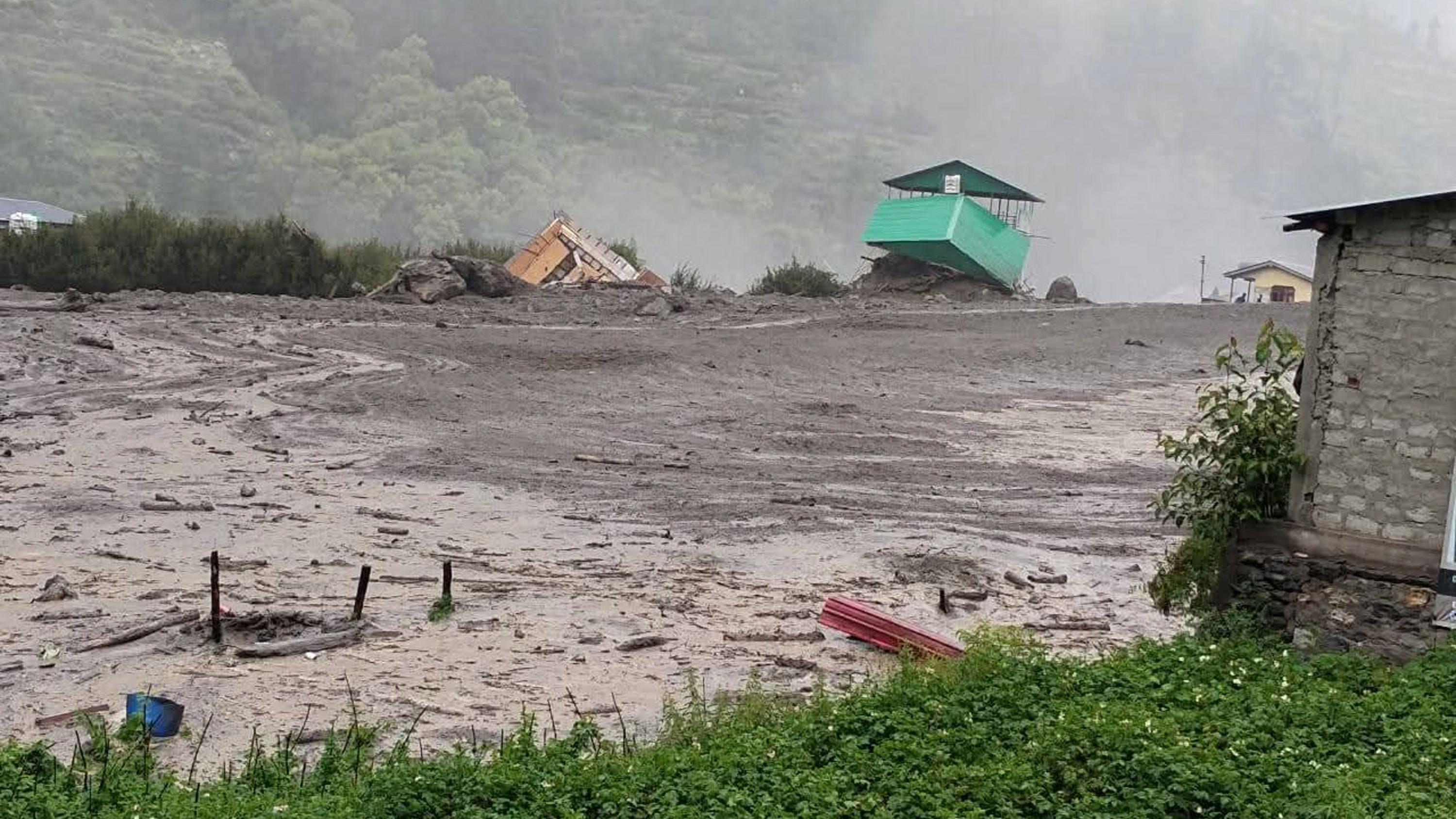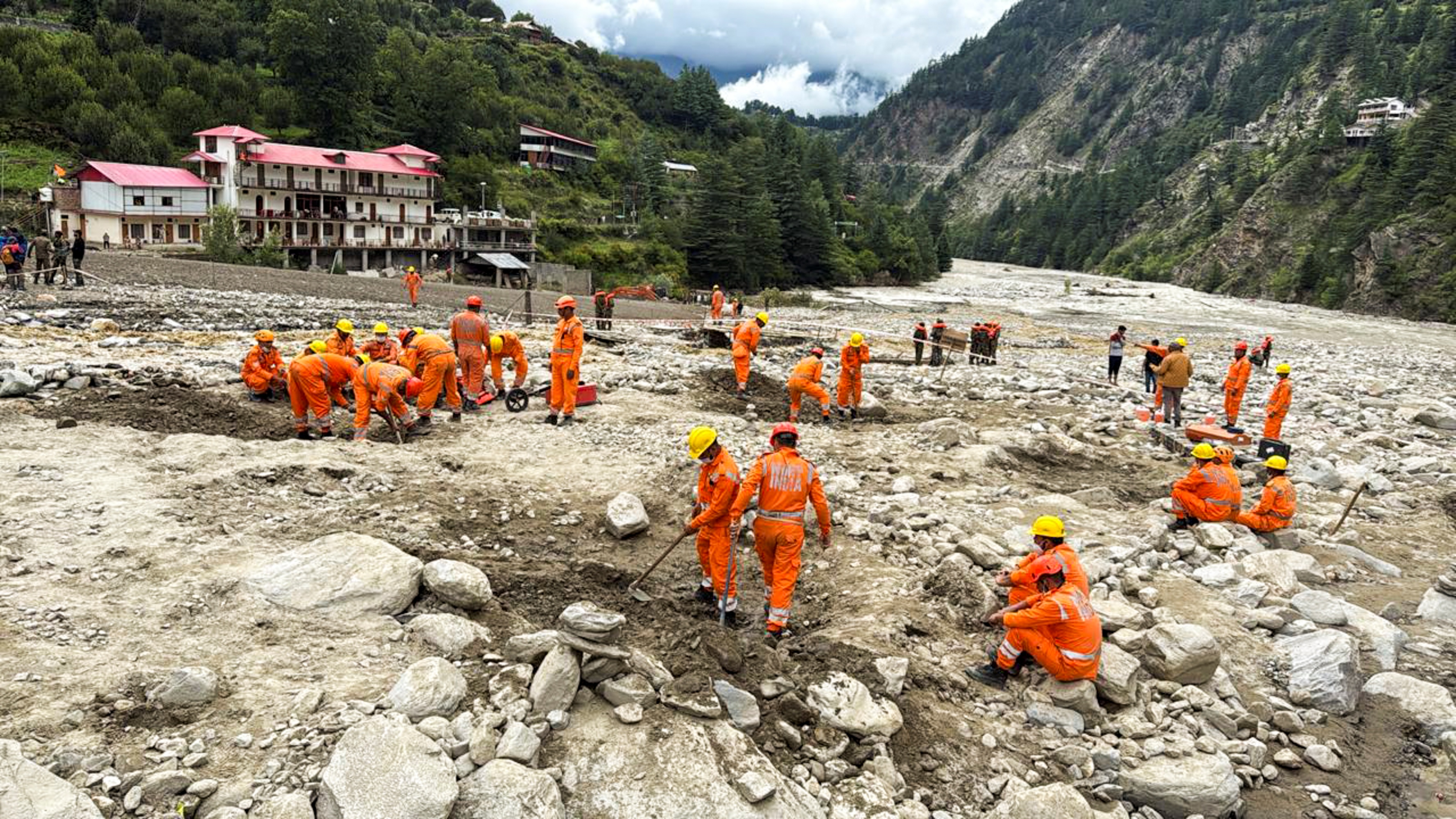- Natural disasters in the Himalayan regions are occurring at an alarming rate. Innocent lives and properties are being lost in the backdrop of unabated infrastructural developments undertaken to provide amenities to the demands of modern-day requirements. Of course, governments are obligated to ensure that people are provided with every conceivable infrastructure to ensure their lives are on par with others. Yes, living in hilly terrains has its own set of challenges, and as such, it may not be possible for the administration to extend amenities as compared to urban dwellings. However, motorable roads, bridges, buildings, and other necessities cannot be ignored since the people’s aspirations are always on the rise. Natural human aspirations, you see.

PC: BBC
- Nonetheless, rampant construction activities undertaken by the government authorities have had a countervailing effect on the extremely sensitive ecology in the Himalayan region. Mind you, placing ecology before economy while developing mountain infrastructure means humankind must be prepared for more Dharalis. Last week’s flash flood in Uttarakhand’s Dharali village should not be dismissed as just another mountain disaster. Its causes might have been beyond human control, but human choices amplified the effects. Traditional hill homes are built on slopes and terraces, out of harm’s way, but the buildings swept away by the torrent at Dharali had encroached on the floodplain. What are the consequences witnessed? Let’s dwelve further.

PC: ETV Bharat
- Reports say some three dozen hotels, homestays, and shops were in the water’s path. In good times, these were prime waterfront properties, attracting pilgrims and tourists making a beeline for Gangotri, which is hardly 20km away. And the day of disaster happened to be bad. As climate change makes such events more frequent, there will be more bad days across the hills. That’s why the choices we make now are crucial. Dharali is among the beneficiaries of the government’s Char Dham push. Wider highways mean ease of travel, and tourist numbers have risen fast across the circuit. Road construction after the 1962 war, and bus services, boosted the visitor count to 2L. But what’s happening now is unprecedented, and perhaps excessive.

PC: Zee News – India.Com
- Last year, when the highway project was 75% complete, more than 14L visited Badrinath, and over 16L visited Kedarnath. Influx of millions of tourists and their cars into geologically fragile zones may be good for business, but is risky otherwise. Roads have been widened at the cost of forests, and hillsides and riverbeds are burdened with concrete buildings everywhere, be it in Garhwal, Shimla, or Mandi. It’s not surprising that all new mountain highway projects are plagued by landslides every day. India must seriously weigh the intangible costs and benefits of its infra projects to avoid more Dharalis. Going forward, the policymakers must make concerted efforts to ensure the ecologically sensitive mountain terrains are not abused unabated.






